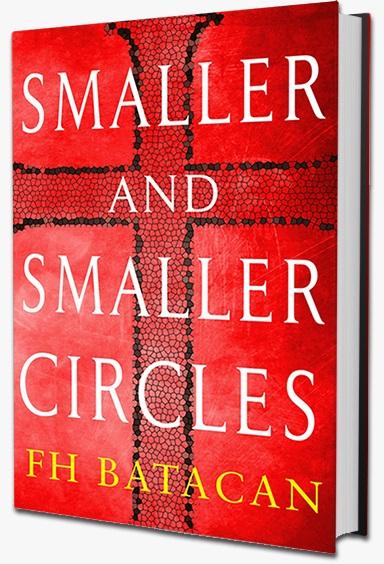Pinoy crime novel ‘Smaller And Smaller Circles’ makes US debut
“There are no serial killers in the Philippines.”
So speaks one of the characters in F. H. Batacan’s "Smaller and Smaller Circles", first published in novella form in 2002, and released as a novel last August by Soho Crime, New York.

The novel’s protagonist, a kindly, intelligent Jesuit named Gus Saenz, is called in by Director Lastimosa, the head of the National Bureau of Investigation, to look into a series of grisly murders.
With his fellow priest and protégé Jerome Lucero, a psychologist, to assist him in the investigation, Saenz follows the track of a serial killer who preys on young boys and leaves their mutilated bodies at the Payatas dumpsite.
The narrative reflects Filipino life and society. Saenz is of the upper-middle class, his looks a nod to the colonial presence: he is “tall, a little over six feet… has the wiry musculature that comes with zero body fat. He has angular mestizo features… [and] rock star hair.”
Saenz was educated at a French university, and returns home to join the priesthood and serve the country as a forensic anthropologist. He is burgis: he reads Lacan, Malinowski, the Asterix comic books, listens to Glenn Gould, Gregorian chants, The Clash. He is Catolico cerrado: his stay abroad and eclectic tastes in literature, music, and art, did not divert him from the religion of conservative Filipinos of his class. He is also altruistic: his main frustration is the lack of true justice in a country swayed by influence and politics.
Despite the emphasis on Saenz’s social status, which was necessary to creating the character—it is the wealthy, after all, who can afford to study forensic anthropology abroad—Batacan has managed to make her priest-detective sympathetic and engaging. Saenz’s elite background provides a glaring contrast to the poverty of the murdered boys and their families, yet he loses neither his humility nor compassion along the way.
As Saenz and Lucero seek to unravel the mystery, they are thwarted by political infighting within the NBI. Acting against them out of envy and ambition is Attorney Ben Arcinas, who at first seems a stock “slimeball” character, with manicured nails, badly-dyed hair, and arrogant manners—he is by turns “defiant” and “sullen”—but what some readers might not realize is that such people are all too common in the realities of Philippines society; Arcinas is drawn from real life.
Help comes from Joanna Bonifacio—intrepid reporter, a former student of Saenz’s in anthropology at that French university. She works for a major network and in her quest for a story, supplies Saenz with crucial information he would not have obtained otherwise.
The murders are as brutal and gruesome as those described in Patricia Cornwell’s Kay Scarpetta series or of Kathy Reich’s Temperance Brennan books, both also involving protagonists who are forensic experts. Saenz’s appeal is that he treats each body not merely as a victim, but as an individual, as a person, and it this humanity that tempers the evil of the crimes.
The action remains fast-paced and gripping, and is sustained throughout until the end, when Saenz and Lucero finally uncover the truth.
This expanded version of the book is meatier, a well-fleshed-out story that delves deeper into the psychological motivations of the antagonist and shows that serial killers could very well be active in the Philippines, especially in the vulnerable communities depicted in the book.
Batacan’s novel points out that just because no murder cases have been identified as serial killer cases, this does not mean there are no serial killers in the Philippines. It means that the country lacks the knowledge and resources to identify—and solve —such cases. She has the facts to back up this argument: she worked for ten years in the Philippine intelligence community. Her novel is a sobering indictment of the system and an advocacy for a more effective, just, and incorruptible investigative system.
The other mystery that we want answers to is when Batacan will follow up this sterling debut with another novel starring Saenz and Lucero; it is time for a sequel. — BM, GMA News
Smaller and Smaller Circles by F. H. Batacan, 2015. 368 pages. Soho Press, Inc.
Follow Jenny Ortuoste on Facebook, Twitter and Instagram.




